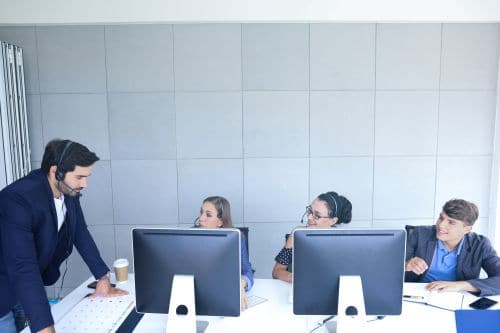Post-editing
DOES YOUR AUTOMATICALLY TRANSLATED TEXT NOT SOUND GOOD AND IS IT FULL OF MISTAKES? USE OUR POST-EDITING SERVICES TO ENSURE YOUR MATERIALS ARE MORE PUBLISHABLE.

MACHINE TRANSLATION POST-EDITING (MTPE)
As technologies develop, including those allowing for machine translation, many people are increasingly asking themselves whether translators are still needed. Even though the quality of machine translation is increasing, it may provide great support for a translator rather than be considered a threat to the profession. Machine translation, which means translation created by a computer, always requires proofreading by a human, which means a service known as post-editing.
If you want to learn more about machine translation, or you have urgent projects that need to be completed ASAP, then just let us know.
WHY IS MACHINE TRANSLATION NOT PERFECT?
The systems used for machine translation have their drawbacks. First of all, they are not able to capture hints, convey the complexity or the emotional load of texts, or even correctly recognise idioms as a specialist would.
A text created through machine translation can contain many errors resulting from the fact that the computer failed to understand the context in which a given word or phrase is used.
Elements of texts where errors are particularly frequent include titles, surnames (e.g. Smith, Walker, Butcher) and other proper names which, regardless of the application used for the machine translation, are considered to be common names by direct translation systems.
In the case of specialist texts, not taking the specific terminology previously used by the customer or characteristic of a given field into account by a translating programme is a mistake as well.
Professional translation into the target language is always a better choice in this case.
Translation of a multi-stage training project
The client came to us with a training project, in the implementation of which he needed support in the field of translation of a 200-page training manual and training materials from English into Polish, translation of exam questions in the client’s secure environment (confidential information), and providing simultaneous interpretation in the English-Polish combination during online training sessions.




TYPES OF MTPE
Two types of MTPE can be distinguished: light (basic) and full.
LIGHT POST-EDITING
The first type is known as light post-editing. It focuses on improving the texts obtained from machine translation so that they can be made completely understandable. This action is necessary, regardless of whether the content was for a text for internal use or was to be published. The process involves checking whether the programme correctly translated the source text and then correcting any basic grammar issues, etc. Light post-editing makes it possible to improve statistical machine translation by excluding linguistic or translation errors.
FULL POST-EDITING
The other type of MTPE is known as full post-editing. It is a better solution in the case of texts to be published – light post-editing should be applied to texts that are to be used for internal purposes. Full post-editing makes it possible to eliminate all the defects of machine translation.
Full post-editing aims to improve the text generated by an automatic translator so that its quality is comparable to that represented by texts translated by a human translator. Therefore, this type of post-editing sometimes requires a thorough rewording of the text obtained from machine translation. A Post-editor is a translator that specialises in MTPE – where they attempt to give the new text the complexity and emotional load of the original text, and to obtain the quality that we would have achieved if the text had been translated by a professional from the very beginning.



MACHINE TRANSLATION AT SKRIVANEK
Here at the Skrivanek translation agency, we offer a wide range of translation services, including machine translation and post-editing. For the first of these services, we apply neural machine translation, specifically the Skrivanek original NMT system. It uses neural networks, meaning that it works similarly to the human brain. This allows it to create databases containing combinations of phrases from translation memories, and then use them in the process of translating the text. A translation memory is a tool used also by professional translators, allowing them to translate texts faster.
Machine translation services are increasingly popular, mainly due to lower costs and savings in time. They can really pay off for large translation projects containing repeated elements, making the translation process much faster. This small revolution in the translation industry can help us in translating operating manuals, internal communications or other documents used by your company.
When determining the order details with you, we also help to decide whether neural machine translation is a good option in a given case or whether it would be better to request a standard translation made by human. In order to improve the process, you can also order a raw text translated by the machine, but this option is not particularly recommended by us.
Once the translation is ready, then along with you we can decide whether light or full post-editing should be performed. You may also receive a raw text translated by a machine, but this option is not recommended.
ADVANTAGES OF MACHINE TRANSLATION
The advantages of machine translation are primarily speed and cost effectiveness. Thanks to the application of machine translation technology, the translation process becomes much faster, saving time. At the same time, machine translation with post-editing is more precise and offers higher quality than pure machine translation, as post-editors correct any possible errors, shortcomings and ambiguities. They also modify the tone of the content taking the context of the source text into account. It can be said that machine translation with post-editing may be the best compromise between the speed of automatic translation and the quality of human translation. It is one of the best options if you have a need for repetitive texts translated from one language into many other languages in a short time.
WHEN CAN MTPE PROVE USEFUL?
MTPE can be particularly useful when you need a quick and cost-effective translation, but at the same time you care about the high quality of the text. Such services are perfect for companies that have to translate large quantities of materials, including brochures, presentations, technical documentation or training materials. We recommend it for texts with a smaller degree of specialisation or those that do not require knowing the industry-specific terminology in detail.
HOW HAS MTPE EVOLVED RECENTLY?
Machine translation and post-editing have undergone a significant evolution in recent years, competing against full human translation and facilitating the work of translators. Thanks to the development of artificial intelligence and machine learning, the algorithms used as part of machine translation have improved considerably. The introduction of models based on neural networks is just one of the many ways used to improve the quality of translation. The use of these advanced technologies in machine translation has allowed us to increase the precision, even in the case of more complex phrases or idioms, which was previously difficult to achieve. Modern machine translation systems are able to better understand the context of the text, which leads to more consistent and natural translations. With the development of machine translation, post-editing has gained importance as a service aimed at improving the quality of translation and adapting it to the target culture.
QUALITY GUARANTEE
Using the services of machine translation and post-editing that we offer, you can be sure that everything will be done in an absolutely professional manner. This is confirmed by the certificates that we hold, such as the one certifying that we operate in accordance with ISO 18587. This standard specifies the “requirements for the process of full, human post-editing of machine translation output and post-editors’ competences”.
